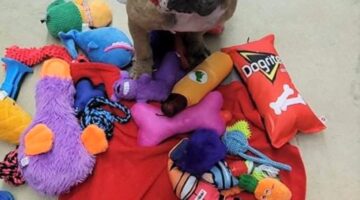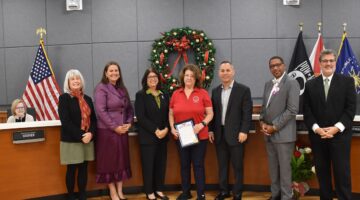Tiger sculpture at the center of new/old art controversy
BY PRU SOWERS
KONK LIFE STAFF WRITER
You wouldn’t think returning the beloved steel tiger sculpture that guarded the former Glynn Archer Elementary School to its original perch would be so difficult but apparently it is.
The 15-foot long tiger that was the school’s mascot for 30 years has been refurbished and the plan was to return it to its concrete pad at the corner of United and White streets once the renovation of the former school building into the new Key West City Hall was completed. But then politics reared its head.
Because the sculpture would be located outside of a new building, the city Art in Public Places (AIPP) board, which was formed in 2000 to advise city commissioners on the selection and location of public art, took up the issue and recommended that the tiger be moved to the other corner of the new City Hall, at Varela and White streets. That did not sit well with some commission members, who argued at their last meeting on Oct. 18 that AIPP does not have jurisdiction over the matter and the tiger should go back to its original location.
“The way I look at it is Art in Public Places is an advisory board for new art. This [tiger] is not new art. This was here for 30 years,” said Mayor Craig Cates.
“That’s where it’s been all these years,” said Commissioner Richard Payne about the original location of the tiger. “We’re just putting something back where it was. Let’s put it back.”
But commissioners Sam Kaufman and Margaret Romero were joined by Commissioner Jimmy Weekley in voting to postpone a vote that would have restored the tiger to its original concrete pad at White and United streets. (Commissioners Clayton Lopez and Billy Wardlow were absent.) Kaufman argued that the commission should follow city ordinance and allow the AIPP board to take up the issue again at its Nov. 14 meeting, as AIPP board members have requested.
“We may not agree with the AIPP board. And I don’t think we have to agree necessarily with the AIPP board. But it would be good for us to communicate and respect the process,” Kaufman said, adding, “The process is very important.”
And more than just location might be riding on the decision. City ordinance requires that any new commercial building project pay a percentage of the construction costs to the AIPP board. That money is then used to purchase and install public art around the city. Under those rules, the city owes AIPP $150,000 and $90,000 has already been paid.
But city officials are arguing that the $60,000 cost of restoring the tiger plus two murals that originally hung in the elementary school and which will be returned to the building should count towards the remainder of the city’s AIPP obligation. If the AIPP agrees that the tiger and murals are, indeed, not new art then the board does not have jurisdiction over the location issue but the city is now back on the hook for the remaining $60,000.
AIPP will address the issue at its Nov. 14 meeting. City commissioners will take their own vote at their Nov. 15 meeting.
The six-foot-tall tiger was originally created by Key West artist and teacher George Carey and his Key West High School welding class sometime in the mid-1980s. It is constructed of small pieces of scrap metal and its teeth are made from spark plugs. The tiger is one of several metal sculptures Cary and his students made around the same time, including the giant conch shell at the high school, the buccaneer at Horace O’Bryant School and the shark at Sugarloaf School.
[livemarket market_name="KONK Life LiveMarket" limit=3 category=“” show_signup=0 show_more=0]



No Comment